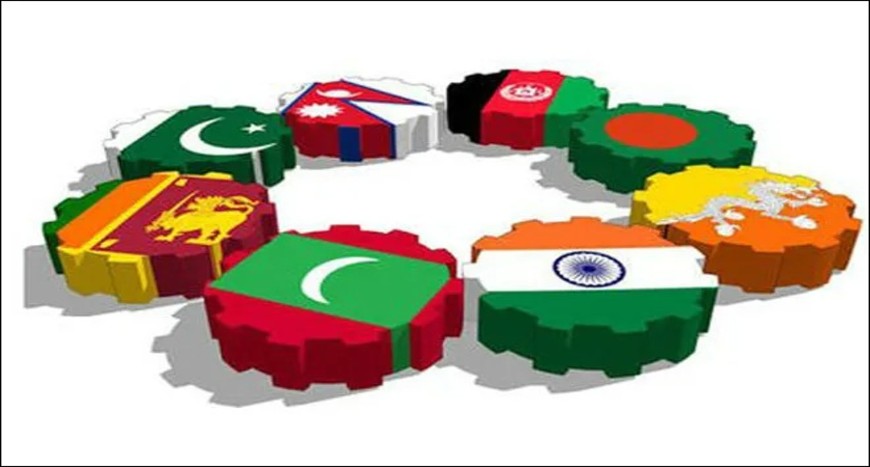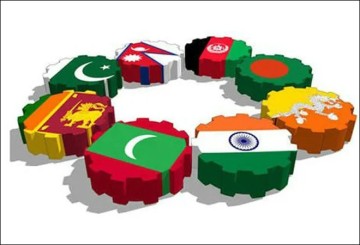
Image Source: Getty
Tensions surged between India and Pakistan in late April after Pakistan-sponsored terrorists killed 26 civilians in Pahalgam. In retaliation, India launched Operation Sindoor to target Pakistan’s terror infrastructure. After a series of escalations, both countries finally agreed to a ceasefire on 10 May 2025. Amidst this, other South Asian countries condemned the Pahalgam terror attack but maintained neutrality and continued to call for de-escalation. Their choice for neutrality requires a deeper understanding of the factors that have historically influenced this policy, particularly by examining the four Indo-Pak wars from 1947 to 1999.
Factors shaping foreign policy:
Geopolitics: The partition of the Indian subcontinent in 1947 left the region with immense geographic and material asymmetries. For India, nations like Nepal, Bhutan, and Sri Lanka became vital to ensure its natural line of defence, while Pakistan asserted itself in Afghanistan to rule out the possibility of a potential Pashtunistan. This created suspicions for both powers by their respective immediate neighbours.
Pakistan’s revisionist ambitions were perceived by Nepal, Sri Lanka, the Maldives, and later Bangladesh as a means to keep Indian power preoccupied and influence in check. On the other hand, Afghanistan leveraged the status quo and began to push back against Pakistan.
The hostility between India and Pakistan offered these countries an opportunity to balance bilateral pressures from their immediate neighbour. Pakistan’s revisionist ambitions were perceived by Nepal, Sri Lanka, the Maldives, and later Bangladesh as a means to keep Indian power preoccupied and influence in check. On the other hand, Afghanistan leveraged the status quo and began to push back against Pakistan. These strategies let them pressure their larger neighbour (see here and here), exercise their agency, and eventually diversify partnerships in the sectors of development, trade, and defence. Nonetheless, South Asian countries remained pragmatic with geographic and economic realities compelling them to respect their immediate neighbours’ redlines. Neutrality, thus, allowed them to reap benefits from their immediate neighbours while simultaneously expanding their agency.
Domestic Politics and Nationalism: India’s history, size, bilateral irritants, and drawing of red lines with neighbours on internal politics (stressing political stability and treatment of minorities) and external relations often motivated the political class in Nepal, Sri Lanka, and Bangladesh to promote anti-Indian sentiments. On the other hand, the Durand line, treatment of Pashtun minorities, and support to the Mujahideen had created resentment towards the Pakistani leadership in Afghanistan. Pakistan’s role in Bangladesh in the 1971 war and treatment of Bengalis also deeply polarised the latter’s politics, with the Awami League embracing secularism and close ties with India and other parties and organisations embracing Islam and close ties with Islamabad.
Given the significant strategic and domestic costs that came with definite alignments with either players, South Asian nations and leaders preferred neutrality. They have used the crisis to consolidate their position, iron out bilateral differences, and even enhance nationalist credentials by demonstrating their preference for neutrality and sovereignty over alignment.
Ideas: South Asian countries have preferred neutrality and advocated for regional peace, hoping that it could pave the way for their economic prosperity and benefit. In this highly hostile environment, they have seen themselves as agents of peace and regional integration. On multiple occasions, different countries had even volunteered to mediate between India and Pakistan. As a result, by the 1970s, all small South Asian powers had embraced the non-alignment movement (NAM). While the NAM was used to stay away from Cold War politics, it also paved the way for South Asia’s traditional neutrality between India and Pakistan.
In fact, in 1971, when Cold War politics were at their peak in the region, Sri Lanka proposed the idea of the Indian Ocean as a Zone of Peace to demilitarise and promote peace. In 1975, Nepal adopted a similar zone of peace proposition to focus on economic growth and increase its diplomatic manoeuvring vis-à-vis India. During the same time, South Asian countries一Nepal, the Maldives, and Sri Lanka advocated for the denuclearisation of the region. In the 1980s, ideas and hopes for regional cooperation blossomed. Countries like Bangladesh attempted to convince India and Pakistan of the need for the South Asian Association for Regional Cooperation (SAARC) to promote connectivity and economic integration.
Walking a Thin Balance:
When the first India-Pakistan War commenced, half of the nations were yet to be independent (Table 1). India continued with the British legacy and agreements when dealing with the Himalayan states. It signed a standstill agreement with Nepal, which exercised a dominant say in its trade and diplomacy till the 1950 Treaty. Bhutan was guided by India on foreign policy. On its part, Afghanistan remained neutral due to domestic politics. The regime feared that a pro-India stance could spark a rebellion and provoke religious sentiments, given the close collaboration between its Pashtun tribal fighters and the Pakistani state against India in Kashmir. Kabul practised this neutrality despite not recognising the Durand line and being the only country to oppose Pakistan’s admission to the UN.
By the 1950s, Sri Lanka and Nepal were keen to diversify their relations with India and assert their independence due to asymmetries and treaty obligations. At the same time, Pakistan increased its outreach with India’s neighbours under the pretence of India being a mutual threat. It established relations with Sri Lanka in 1948 and with Nepal in 1960. In many ways, the 1962 India-China war was a precursor to testing this autonomy of neighbours, where Sri Lanka, Nepal, and even Bhutan preferred to stay neutral. The war furthered Delhi’s apprehensions of a potential China-Pakistan alliance against India vis-à-vis other neighbours.
As tensions escalated in 1965, Pakistan planned to increase pressure against India and to separate it from its chicken neck with the help of China and Nepal. Despite these calculations, South Asian countries like Sri Lanka and Nepal remained neutral. This was shaped by proximity, economic dependence, and improvement in relations with India in recent years. On its part, post-1962, Bhutan had decided to gradually diversify its ties from India by using the latter as a window to the rest of the world. This guided their strategic silence. In the case of Afghanistan, the reaction was ambiguous despite existing tensions with Pakistan. They used neutrality to seek a solution to the Pashtunistan issue, albeit the proposed resolutions kept changing from autonomy to self-determination based on Pakistan’s military momentum. The Maldives, just two months into its independence, remained isolated.
Table 1. South Asian countries’ position during the India-Pakistan wars
War
Nepal
Bhutan
Afghanistan
Sri Lanka
Maldives
Bangladesh
1947
Standstill agreement
India-guided
Neutral
Not independent
Not independent
East Pakistan
1965
Neutral
India-guided;
Strategic silence
Neutral
Neutral
Isolated
East Pakistan
1971
Neutral
India-guided;
Supported India
Neutral
Neutral
Neutral
East Pakistan
1999
Neutral
India-guided;
Strategic silence
Neutral;
Passive support to Pakistan
Neutral
Neutral
Neutral
Source: Author’s compilation
In 1971, as the refugee crisis in East Pakistan worsened, countries such as Sri Lanka, Nepal, and Afghanistan remained neutral and called for the restoration of normalcy to facilitate the safe return of the refugees. Both Sri Lanka and Nepal were concerned that Pakistan’s disintegration could drastically change the balance of power in India’s favour, undermining their agency and bargaining leverage. Sri Lanka also feared that the unrest in East Pakistan could also inspire separatists in their own country, and also set a precedent for Delhi’s involvement in the Tamil question more openly. Colombo also gave its airspace to Pakistan to transport troops to East Pakistan. Nepal, meanwhile, hoped that East Pakistan could serve as a potential avenue for economic diversification from India. It also accommodated over 11,000 Pakistani refugees once the war began and airlifted them to Pakistan later.
The birth of Bangladesh created a balance of power that was in India’s favour. Sikkim’s integration into the Indian Union introduced new anxieties among smaller neighbours, including in Bhutan. India’s operations in Sri Lanka and the Maldives in the 80s, and a blockade in Nepal, further exacerbated these concerns.
Afghanistan, despite its growing development partnership with India, remained neutral. It feared that Pakistan’s disintegration could exacerbate the use of force against other minorities and impact its security and trade. Bhutan proactively supported India. This was due to the humanitarian cause and the expectation of an independent Bangladesh helping it diversify with economic partnerships. Its pro-India stance also helped the country become part of multilateral bodies (with the former’s support). The Maldives remained isolated from these regional developments.
The birth of Bangladesh created a balance of power that was in India’s favour. Sikkim’s integration into the Indian Union introduced new anxieties among smaller neighbours, including in Bhutan. India’s operations in Sri Lanka and the Maldives in the 80s, and a blockade in Nepal, further exacerbated these concerns. This led to countries continuing to assert their autonomy and dedicate utmost energy to peace (as seen with the zones of peace proposals) and regional integration. While tensions persisted between India and Pakistan in the 1980s, by 1998, both countries conducted their nuclear weapon tests, pushing South Asian countries to fiercely advocate for denuclearisation and peace. This was despite the Gujral Doctrine attempting to embrace smaller neighbours and accommodate their interests without reciprocity.
The hostility between India and Pakistan has largely shaped the regional order throughout the second half of the 20th century. During this period, South Asian countries have mostly maintained neutrality due to geopolitics, domestic politics and nationalism, and ideas of peace and integration.
Finally, when the Kargil War commenced, neighbours publicly took a neutral stance without a clear judgment on the origin and perpetrator of the war. Apart from politics and geopolitics, ideas played a dominant role in this reaction. Sri Lanka believed that taking sides would cause a setback for regional integration and SAARC; Bhutan maintained strategic silence, and the Maldives refused to make a public statement as it had recently completed presiding over the SAARC. Bangladesh’s Awami League, despite its history with Pakistan, remained neutral and asked both countries to respect the LOC. Afghanistan, subject to Pakistan’s strategic depth since the 1980s, was now under the helm of the Taliban. While they continued helping Pakistan with its terror ecosystem in return for diplomatic and material support, they refrained from any public statements. They were likely hinting at engaging with India, diversifying ties, and soothing Delhi’s anti-Taliban approach.
The hostility between India and Pakistan has largely shaped the regional order throughout the second half of the 20th century. During this period, South Asian countries have mostly maintained neutrality due to geopolitics, domestic politics and nationalism, and ideas of peace and integration. The next article in this series will thus evaluate changes and continuity in these factors and how they have shaped their policies over the last decade.
Aditya Gowdara Shivamurthy is an Associate Fellow with the Strategic Studies Programme at the Observer Research Foundation.
The views expressed above belong to the author(s). ORF research and analyses now available on Telegram! Click here to access our curated content — blogs, longforms and interviews.
